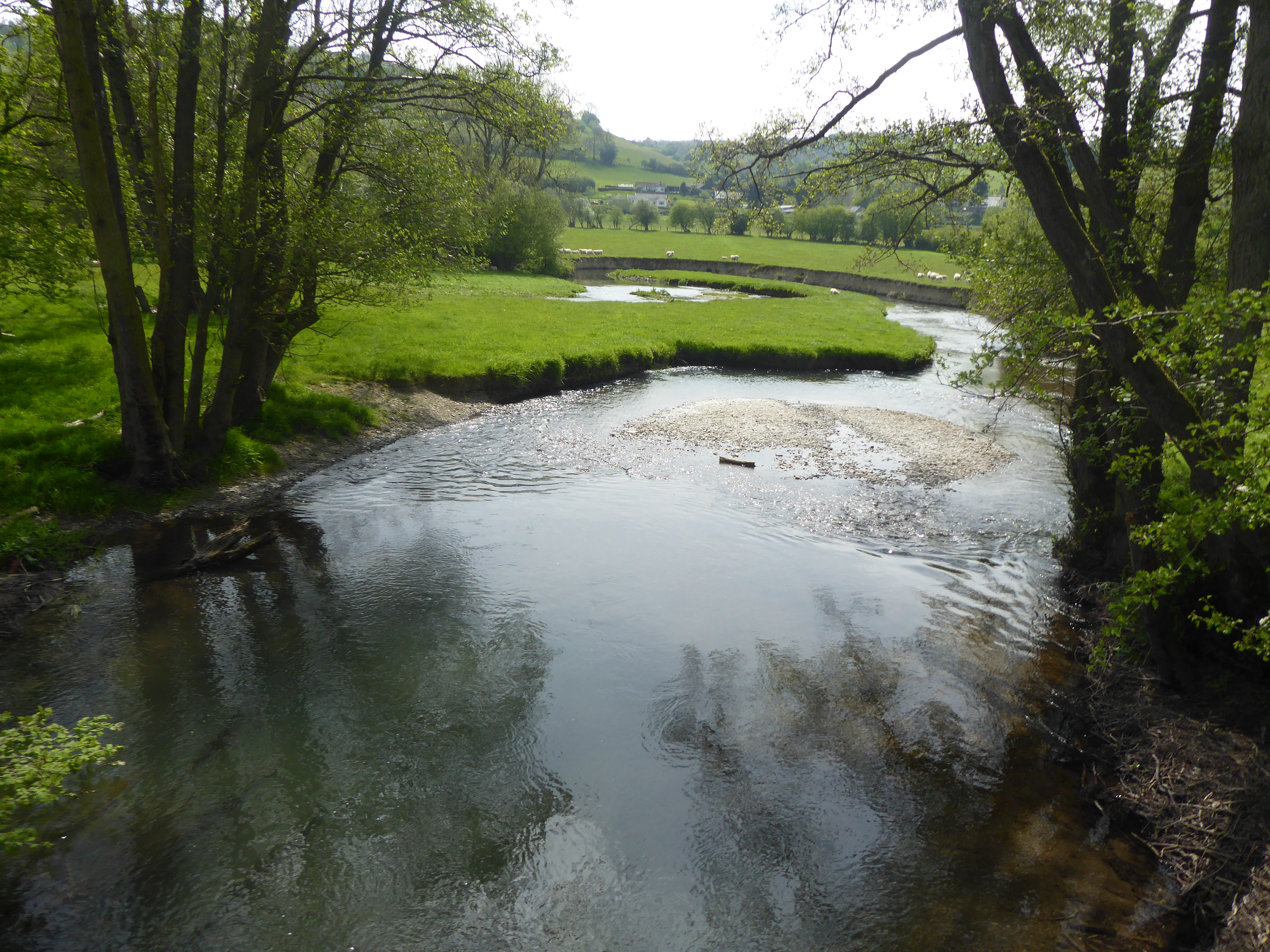
It’s the last day of the first ‘semester’ of our Offa trip. And it dawns like most of the others, sunny and warm. We buy some sandwiches: there’s nowhere to eat or buy food along the Path ahead. In fact, we won’t go through a single village, just green fields, open land and a few lanes. But we’re looking forward to meeting one friend again – Offa, king of Mercia. His Dyke (if it is his) reappears after a gap of fifty miles.
There’s no gentle riverside stroll to start with today. The Path – ‘thank you for visiting Kington’, says a sign – climbs steeply out of Kington and soon it’s on open country and the golf course. Typically, we get lost twice within ten minutes, and have to he helped out by an old woman going shopping and an old farmer on a quad bike. On Rushock Hill we meet the Dyke, and it stays with us, off and on, for the rest of the day. The climbing is steady, till we reach 1,200 feet. The Dyke tends to choose a line that gives a consistent view across sloping ground to the west, so that Mercian watchers can see Welsh ‘trouble’ from afar. Often old oak trees, with extravagantly gnarly trunks, grow on the dyke, and bluebells beneath them.

Of all our days walking this one gives the longest views – back towards the Black Mountains, east into England, with the Malvern Hills grey on the horizon, and north to Radnor Forest. But it also swoops down to lower levels, as from Herrock Hill to the Hindwell Valley and Ditchyeld, where we cross the border into Powys and have a mid-morning stop. Behind us we can hear trees being felled, one every few minutes: a notice explains that ‘under-managed’ woodland is being helped to encourage species variety. Then we’re climbing again by the side of a wood, past ancient Old Burfa, and then through another wood, Granner Wood, at the end of which we emerge into a sea of bluebells. More climbing takes us the high point of Pen Offa, again awash with bluebells, before we drop to the river Lugg (Afon Llugwy). We’re looking for a likely spot to eat our sandwiches and by some miracle we come across a wooden bench by the path – benches in the middle of the country on the Offa’s Dyke Path are as rare as hens’ teeth.

As we eat, Mr Blue approaches from the north. We’re surprised, because the last time we saw him he was walking in the opposite direction, and he stops to explain why. Later we come across Mr Red, whom we’ve seen on two earlier days (he’s back to wearing a red shirt today). We know he’s gaining on us from behind, because we see one of his two collie dogs who goes on ahead of him – possibly to read the signs and report back. And we see the Quiet American, whom we first met outside Hay, and saw again yesterday. He’s aiming for Prestatyn, and walks much faster than us, even though he has a black strap around one knee. His body action is deceptive: he seems to be ambling at a gentle pace.

The next section is high again. It takes us up to Furrow Hill, with big views to west and east. Again we go wrong, distracted by some sheep, scramble in vain up a grassy field, and have to retrace our steps. An obelisk suddenly appears to our right, in green isolation: a memorial to Sir Richard Green Price, the pioneer of Radnorshire railways (there’s still one in operation , the Heart of Wales line). In the final section of the day the Dyke is high and its ditch low, and both canopied by huge old oaks and hawthorns. The end, after a golf course, is sudden and steep, and we find ourselves near the centre of Knighton, a hilly town with the regulation Victorian clock tower and quite a few ancient, failing shops.
Tomorrow C and I leave by train in different directions, C to Swansea and me to Llangefni. We think back over our sunny week in the company of Offa, and think ahead to when we might plan another meeting with him, and a second tour, from Knighton to Prestatyn.


Leave a Reply